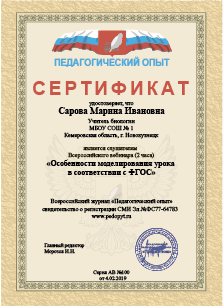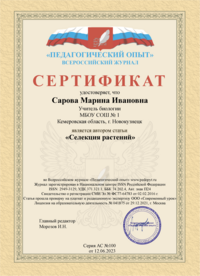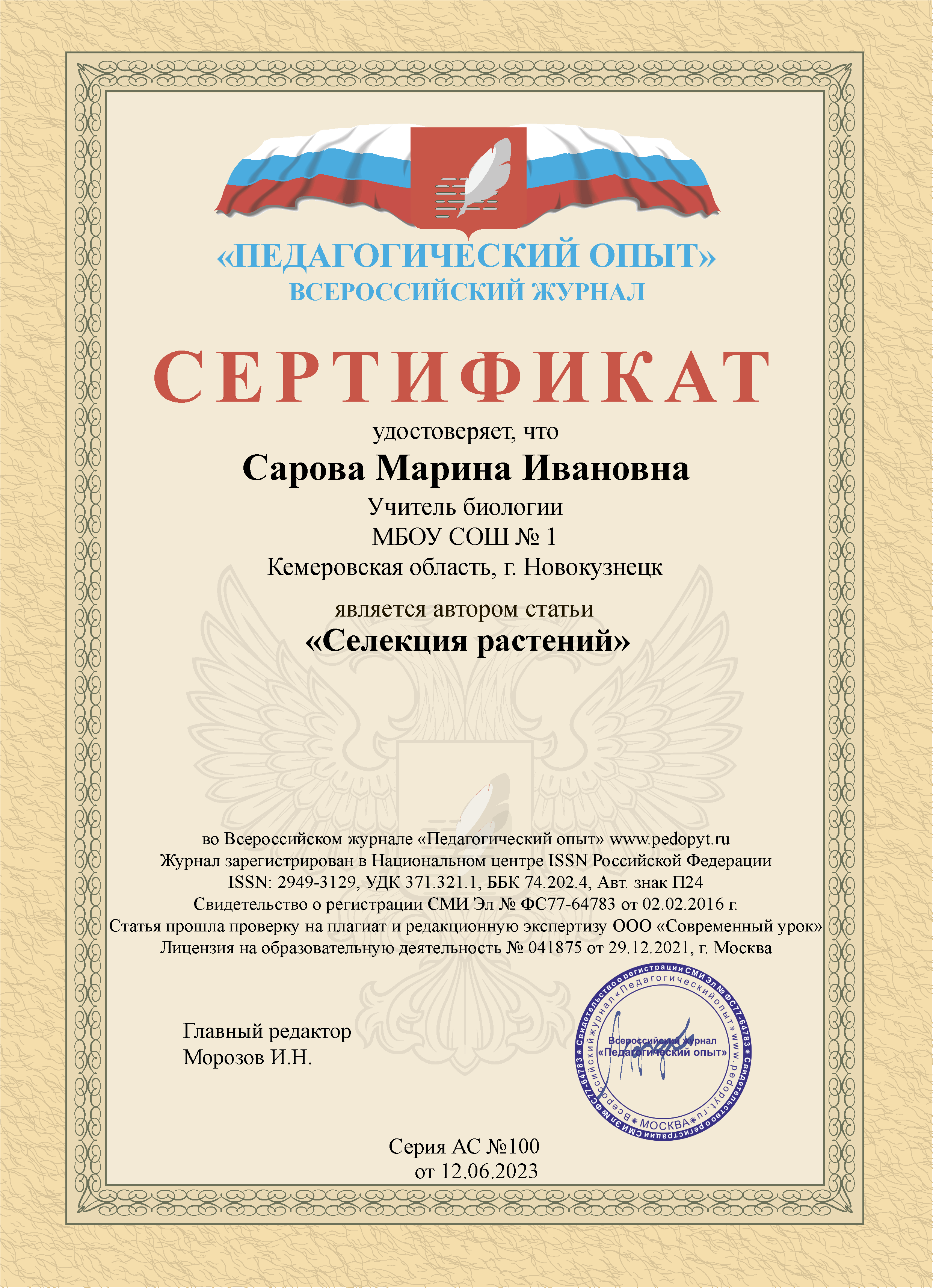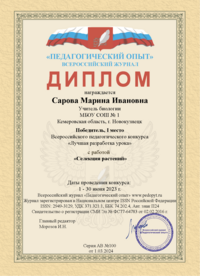Региональный компонент на уроках чтения (английский язык)
Автор: Александрова Татьяна Игоревна
Организация: СУНЦ УрФУ
Населенный пункт: Свердловская область, г. Екатеринбург
«Любовь к своей Родине – это не нечто отвлеченное, это - и любовь к своему городу, к
своей местности, к памятникам её культуры, гордость своей историей.» Эти слова академика Д.С. Лихачева из его книги «Письма о добром и прекрасном», написанной в 1985г., особенно
актуальны в наши дни. Знание и понимание культуры и истории своего края, своего города являются важными в процессе становления личности, формирования её мировоззрения и воспитания патриотизма.
Чтение на уроках английского языка содержащих региональный компонент текстов является не только средством повышения образовательного уровня учащихся, расширения их кругозора и совершенствования владения иностранным языком, но и имеет самое действенное воспитательное значение.
Данная статья включает три задания по чтению текстов разного формата. Они посвящены истории и культуре Урала и Екатеринбурга.
Task 1.
Установите соответствие между текстами A-G и заголовками 1-8.
Используйте каждую цифру только один раз. В задании один заголовок лишний.
- Message to the future 5. The world’s oldest sculpture
- Strange coincidence 6. Crucial location
- Sister cities 7. Ideal material
- The capital of constructivism 8. Our time essence reflection
- Studying the history of the Russian royal family, you will notice an interesting fact. Tsar Mikhail Fedorovich, who became the founder of the Romanov dynasty, was proclaimed the ruler of Russia in March 1613 after a ceremony conducted in the Ipatiev Monastery near Kostroma. The last representative of the same kind of royal Nicholas II along with his entire family was assassinated in Ipatiev House in Ekaterinburg in July 1918. After that, the Romanov dynasty ceased to exist.
- During World War II Ekaterinburg became an important industrial hub because of its easterly locale and metal producing factories. Much of the industry of Moscow and St. Peterburg was transferred so the war would not interrupt it. The city also protected portion of the State Hermitage’s collection of valuable art when it was transferred to Ekaterinburg for safekeeping.
- In 1973 the inhabitants of Ekaterinburg made an attempt to appeal to descendants, to capture the epoch and transfer their experience and knowledge about it from the first person. They laid a “time capsule” on the territory of the Historical Square. It was opened on 30 August 2023. The capsule contained the appeal of citizens to descendants, the plan of Ekaterinburg, some books about the city, its enterprises and famous people, photos and videos. A new “time capsule” was laid on 18 November 2023, on the day of the 300th anniversary of Ekaterinburg.
- Historically, metallurgy was one of the biggest industries of Ekaterinburg. It was the first city in Russia to be industrialized. Its importance grew further the Trans-Siberian Railroad connected it with Siberia. In 1820 roofing iron made in Ekaterinburg was used to cover the roof of the Houses of Parliament in England. 18 thousand pieces and 2,5 million rivets made of Ural metal prevent the Eiffel tower from destructing. The frame of the Statue of Liberty was made of Ural alloy of steel and copper since it was high-strength, resistant to corrosion and easily processed.
- The Shigir Idol was found in 1890 in the peat bog of Shigir on the eastern slope of the Middle Urals. The wood it was covered from is approximately 11,500 years old, making it twice as old as the Great Pyramid of Giza, three times older than Babylon and five times more ancient than the ruins of the city Petra. The wooden structure resembles a totem pole. It can be found in the Sverdlovsk Regional Museum of Local Lore.
- There are two visible footprints of different sizes on the bronze slab. The prints belong to the authors of the project – Evgeny Kasimov himself and an artist Alexander Shaburov. The authors of the idea, perpetuating their feet, claim that their work tells not so much about the Invisible Man, the literary character of H.G. Wells, but about the tragedy of loneliness. This monument is about the world where people communicate without seeing each other. They meet their friends much less. They are much less likely to read real books, almost never write real, good letters.
- With more than 140 structures Ekaterinburg has the highest concentration of constructivist architecture in the world. Several stand-out buildings and residential complexes reflect the city’s industrial history and the ideas of Soviet times: the Hotel Iset, the Chekists’ Town, the Industry House, The Press House, the Main Post Office, the Dinamo Sports Complex, the Hotel Madrid, the White Tower, Uralmash.
Task 2.
Прочитайте текст и заполните пропуски A-F частями предложений, обозначенными цифрами 1-7. Одна из частей в списке 1-7 лишняя.
Rastorguev - Kharitonov's House.
Rastorguev-Kharitonov's house is an architectural pearl of Yekaterinburg. Its construction started in 1794. It is not clear who ordered the construction works. One version tells us that it was a manufacturer Petr Demidov, who went bankrupt (A) __________. Another version, proved by documentation, tells us that Rastorguev bought an unfinished house from the provincial secretary S.I. Isakov's widow.
The architect's name is also unknown. However, considering that the house was built during 30 years, (B)_______. It is well known that on the final stage of the construction M.P. Malakhov took part in this project. Rastorguev had died before the construction was completed and P.Y. Kharitonov, his son-in-law, inherited the mansion. After investigation on brutalities at the Kyshtym factories that the family owned, they were forced to sell all their property. The mansion stayed empty for 50 years. At the end of the 19th century it (C) _____. In 1937 the building was transformed into the Pioneers' Palace.
A public park, laid out in the English style in 1826, adjoins the mansion. There is a pond with artificial island and a rotonda in the park. The underground tunnels (D)_________. According to one legend, Rastorguev, being an Old Believer, built them to provide an escape route from the secret divine services. Another one tells us that these tunnels are secret mines (E) __________. Quartz gold veins really do exist at the Voznesenskaya Gorka, near the mansion. Traces of gold were also found in the Melikovka river (F) _______. However, deposits of commercial value have never been found.
1. were constructed under the park and the mansion
2. that flowed near the left slope of the Voznesenskaya Gorka
3. were surrounded with alleys, paths and artificial hills
4. was rented to people and businesses
5. and all his property was passed on to the merchant L.I. Rastorguev
6. we can suppose that not one, but several architects worked on it
7. which were made where Rastorguev extracted gold
Task 3.
Прочитайте текст и выполните задания 1-7. В каждом задании выберите букву, соответствующую правильному варианту ответа.
Dmitry Narkisovich Mamin-Sibiryak was born in 1852 in Visim, Perm Governorate in the Urals (in present-day the Sverdlovsk Region), into the family of a factory priest. His father wanted him to follow in his footsteps.
During his life, Dmitry Mamin-Sibiryak managed to learn in various fields: the Visim school for workers’ children, the Ekaterinburg Theological Seminary, the Veterinary Department of St. Petersburg Medical Academy. In 1876, not having graduated from the Academy, he transferred to the Law Faculty of St. Petersburg University. He studied there for one year and had to quit training due to health (the beginning of tuberculosis) and financial difficulties. In order to find work and educate his brothers and sister after their father’s death the family moved to Ekaterinburg.
Mamin-Sibiryak is considered to be ‘a singer of the Urals’ because he opened the Urals with all its riches and history to the world. He made numerous trips around the Ural region and studied its history, archaeology, economics, ethnography, nature and daily life. He was elected a full member of the Ural Natural History Lovers Society in 1884.
From the beginning of the 1880s Mamin-Sibiryak was occupied with literary work. A series of travel sketches From the Urals to Moscow, sketches In the Mountains, stories At the Border of Asia and In Bad Souls were signed with the pseudonym D. Sibiryak. Fascinated by Siberia, he initially chose this pseudonym, but later combined it with his real name – Dmitry Mamin.
In his novels and stories he portrayed the life of the Urals and Siberia in the reform years of capitalism development in Russia and the consequent rifts in public consciousness, legal norms and morals. The writer’s most well-known works are the novels The Privalov Fortune, Mountain Nest, Gold, Bread, the novella Okhonna’s Brows and the collections Ural Stories and Siberian Stories.
His books Tales for Alyonushka, Grey Neck and Summer Lightning are masterpieces of children’s classical literature. The writer valued most Tales for Alyonushka and devoted the book to his daughter. He said: ‘Love itself wrote it, that is why it will relive everything.’
Repeated trips to the capital in 1880s extended Mamin-Sibiryak’s literary contacts. He became acquainted with Anton Chekhov, Gleb Uspensky, Vladimir Korolenko and others.
D.N. Mamin-Sibiryak died in 1912. The quotation from the writer’s novel Traits from the Life of Pepko is carved on his tombstone: ‘To live a thousand lives, to suffer and rejoice a thousand hearts is where life and true happiness!’ These words best express the essence of D.N.Mamin-Sibiryak’s life and creativity.
- Dmitry’s father wanted him to become
- a lawyer c) a priest
- a veterinarian d) a teacher
- D.N. Mamin-Sibiryak is called ‘a singer of the Urals’ because he
- was born in the Urals c) studied the Urals
- travelled a lot around the Urals d) told the world about the Urals
- The writer’s real family name was
- Rasskazov c) Sibiryak
- Mamin d) Tomsky
- In his novels the writer shows the influence of capitalism development on
- people’s relationships c) the environment
- the industrial progress d) science
- The latest title of Mamin-Sibiryak’s well-known novel is
- The Bakharevs c) The Privalov Fortune
- Stone Belt d) Sergey Privalov
- The writer’s favourite children’s book was
- The Forest Tale c) Tales for Alyonushka
- Grey Neck d) Summer Lightning
- D.N. Mamin-Sibiryak became acquainted with Anton Chekhov in
- Moscow c) Ekaterinburg
- St. Petersburg d) Yalta
Keys:
Task 1: A2 B6 C1 D7 E5 F8 G4
Task 2: A5 B6 C4 D1 E7 F2
Task 3: 1c 2d 3b 4a 5c 6c 7b
ЛИТЕРАТУРА
- Dmitry Mamin-Sibiryak. Wikipedia.
- Ekaterinburg: guidebook [history, culture, city strolls, accommodation, restaurants, night life]. – Moscow: Avant-Garde, 2004. – 159c.
- Monuments in Yekaterinburg: goingrus.com> Sightseeing in Yekaterinburg.









